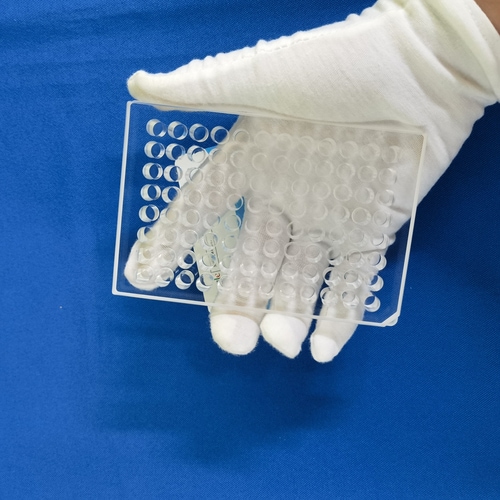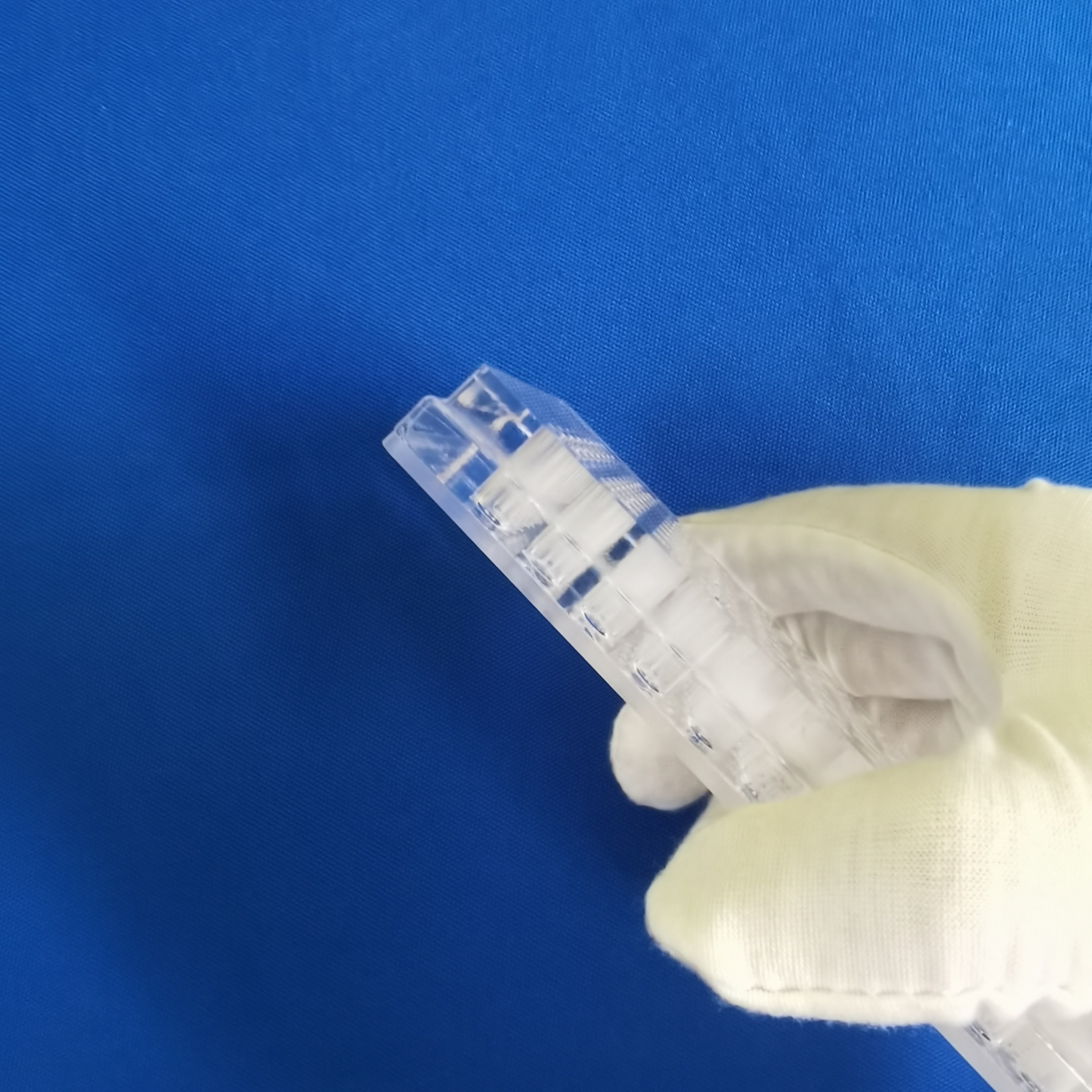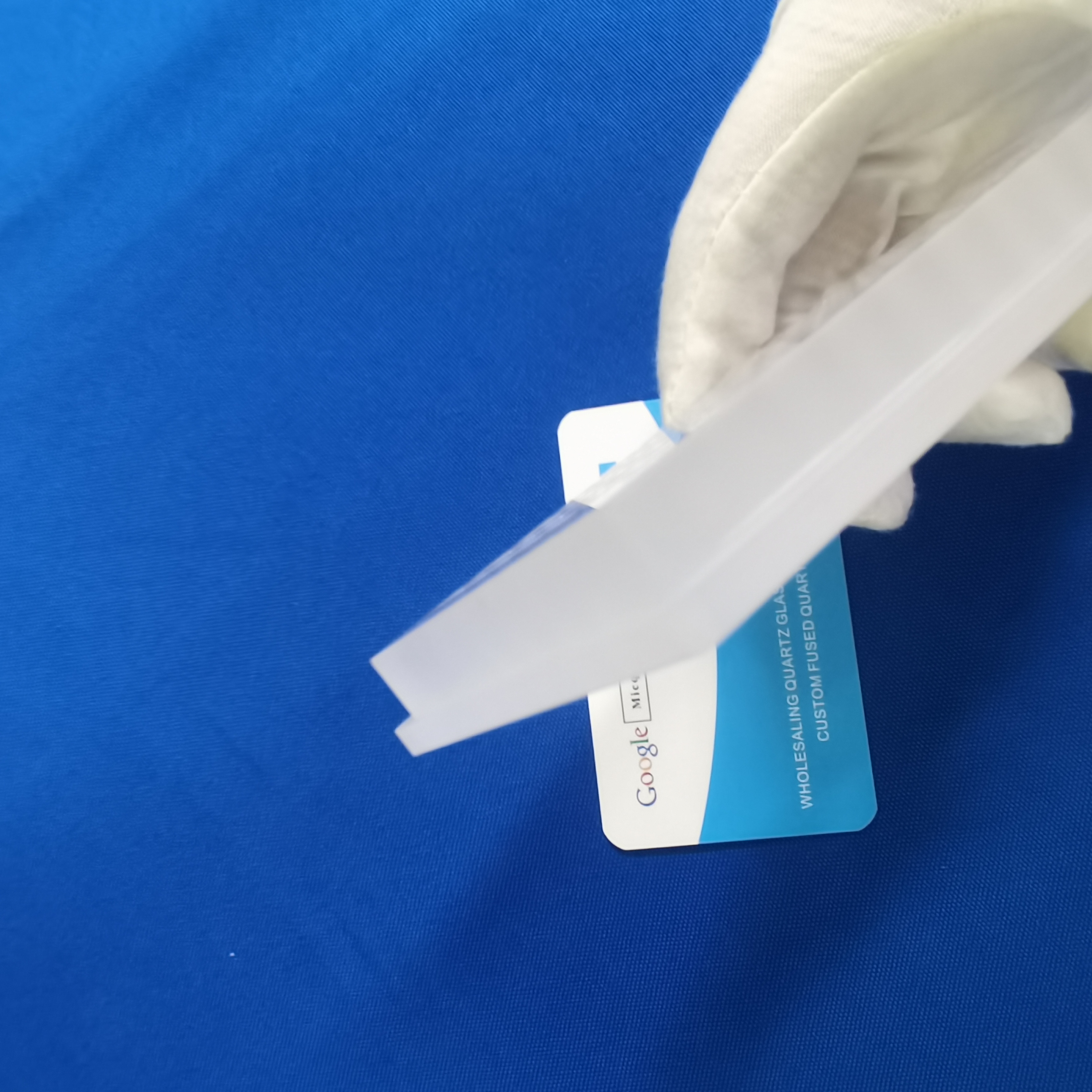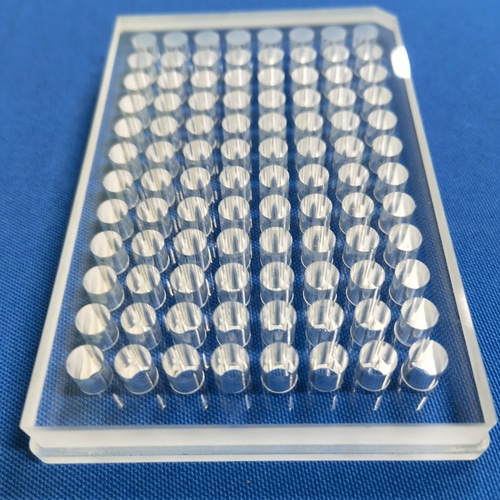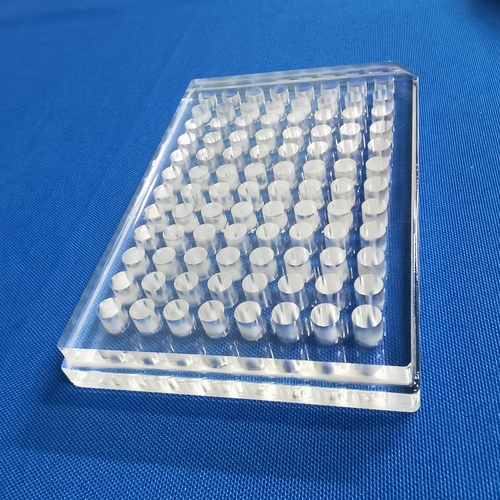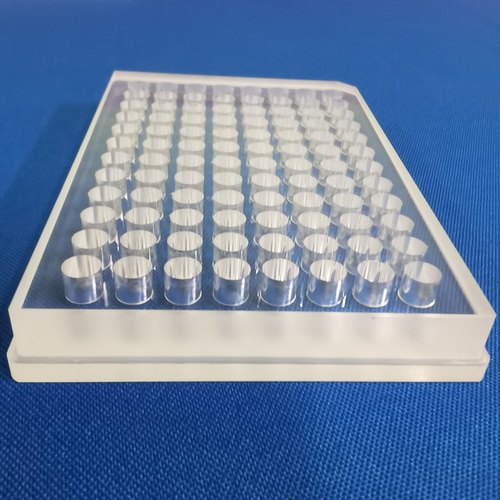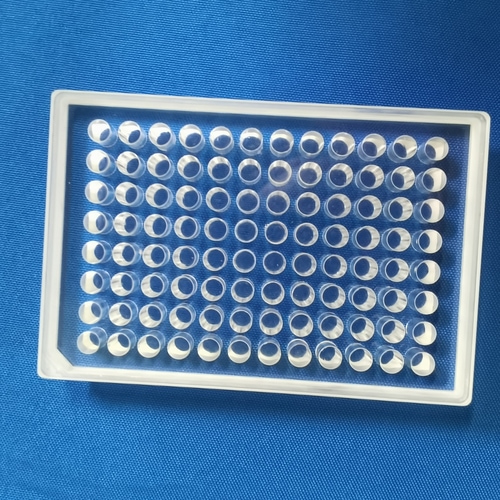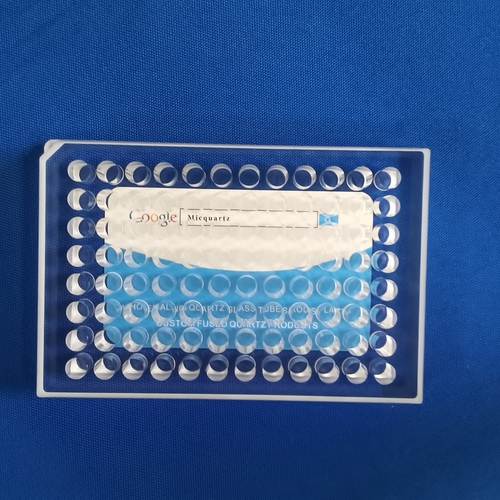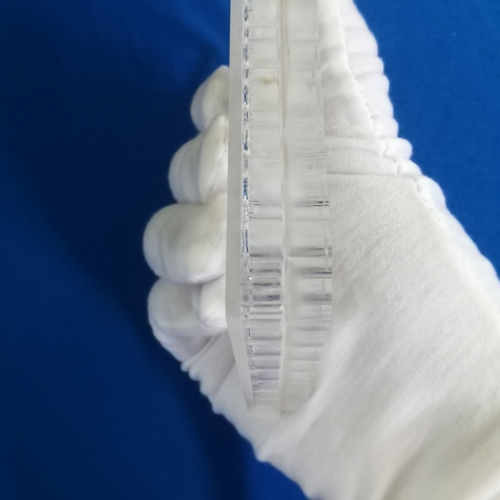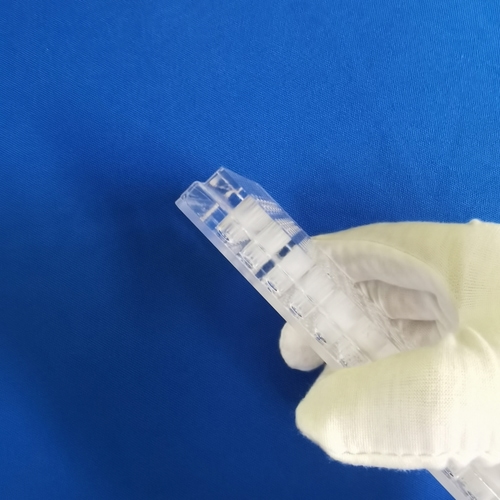General Standard Quartz GLass UV 96 Well Plates Sigma / 96 Well Microplates / 96 Multiwell Plates NEW
Our company now has the ability to produce General Standard Quartz GLass UV 96 Well Plates Sigma / 96 Well Microplates / 96 Multiwell Plates (integrated and Glued). If you want to buy a single quantity, please go to our online store. If you need more quantity for better price or other specifications, please contact us by email: sales@micquartz.com.
BUY LINKS
What’s the difference between integrated and glued quartz UV 96 well microplate?
1. Difference between the manufacturing method and the processing difficulty.
The difficulty of making the Quartz Integrated Multiwell Plates is much greater than that of glued one, so the cost of the two will also be different. The first step in making Quartz UV 96 well Microplate is to drilling the selected quartz plate material with CNC.
The holes of Quartz Glued Microplate are drilled through at first, then the whole miroplate and inner holes are fire polished. After the fire polishing is finished, a piece of cut quartz glass plates is glued with special glue. So the Quartz Glued Microplate you see is transparent in the upper part, and the bottom quartz plate is frosted on the side. The side of the integrated orifice plate is all frosted. This is also the performance of the separation between the Quartz Glued Microplate Sigma and the Quartz Integrated Microplate we produce.
The holes of the Quartz Integrated Microplate have been successfully drilled with CNC at the beginning. At this time, the side wall and bottom of the hole are frosted. The work behind is to manually cold polish each hole. This kind of work time is imaginable long. At the same time, there is also the risk of damage caused by improper operation.
The simple overview is that the inner hole of the Quartz Integrated Microplate is completely hand-made cold polishing, while the Quartz Glued Microplate is fired polished and the bottom is glued with quartz plate.
2. Difference of the Application.
The main difference of the two type is the application, normally gluing type suitable for the application need high light transmittance, but it cannot anti-corrosion, the price is relatively cheaper.
The integrated microplate type is mainly suitable for the application need anti-corrosion( can tolerate a variety of corrosive liquids like acid-base liquid, organic solvents etc), but now this one has been updated, it’s not only anti-corrosion but also has very high light transmittance.
The integrated type also can withstand high temperature(1200℃) and is very longer lifespan than glued type. Widely used in Cell Culture, Core Bio-reagents, Drug Discovery, Lab-ware, Life Science Reagents for PCR, Manufacturer Browser, Research Essentials and so on.
Products Pics
For prompt quotation, please contact us at below form.
Application:
Chemical Industries
Electric Light Source
Laboratories
Medical equipment
Metallurgy
Optical
Photovoltaic
Photo communications
Research
Schools
Semiconductor
Solar
